

🍊 What is Ethyl Ascorbic Acid?
Ethyl Ascorbic Acid (EAA) is a stable, oil- and water-soluble derivative of pure Vitamin C (L-ascorbic acid). It’s considered a next-gen antioxidant and brightening agent that delivers all the glow, firmness, and tone-evening benefits of Vitamin C without the instability or irritation.
Technically speaking, it’s L-ascorbic acid modified with an ethyl group at the third carbon position, which 1)Increases stability (less prone to oxidation), 2)Enhances skin penetration, 3)Lowers the risk of irritation
In other words: It’s the modern, skin-friendly Vitamin C that doesn’t go bad in a week.
🧪 Why Nano?
The “nano” in Nano Vitamin C often refers to 1)Nanoencapsulation: Tiny carrier systems that boost delivery and stability, 2)Molecular size: EAA itself is small enough to penetrate deep into the dermis
Nano-formulations ensure targeted delivery, higher bioavailability, and less surface irritation especially critical for sensitive skin users.
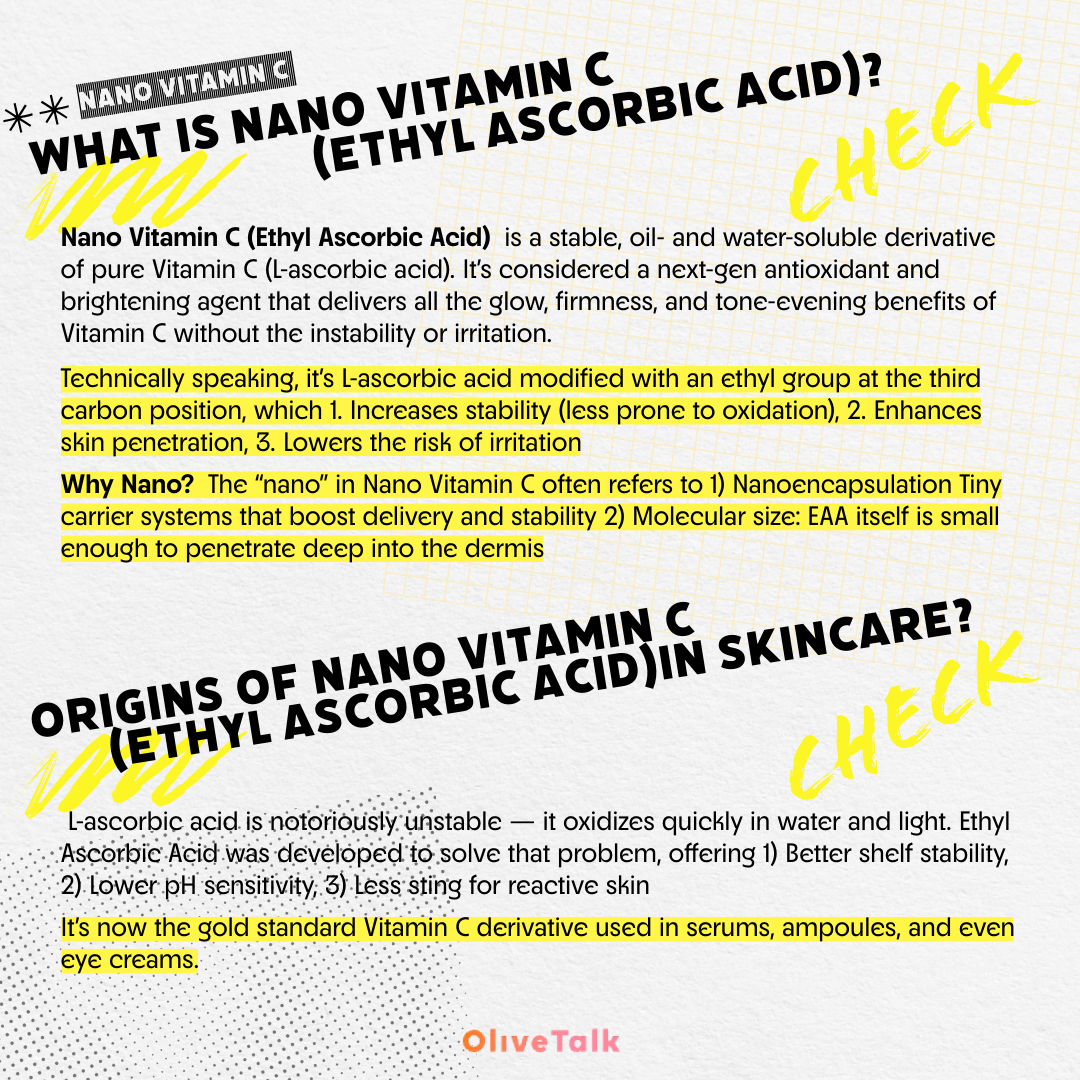
🌱 Origins of Ethyl Ascorbic Acid in Skincare
L-ascorbic acid is notoriously unstable it oxidizes quickly in water and light. Ethyl Ascorbic Acid was developed to solve that problem, offering 1)Better shelf stability, 2)Lower pH sensitivity, 3)Less sting for reactive skin
It’s now the gold standard Vitamin C derivative used in serums, ampoules, and even eye creams.
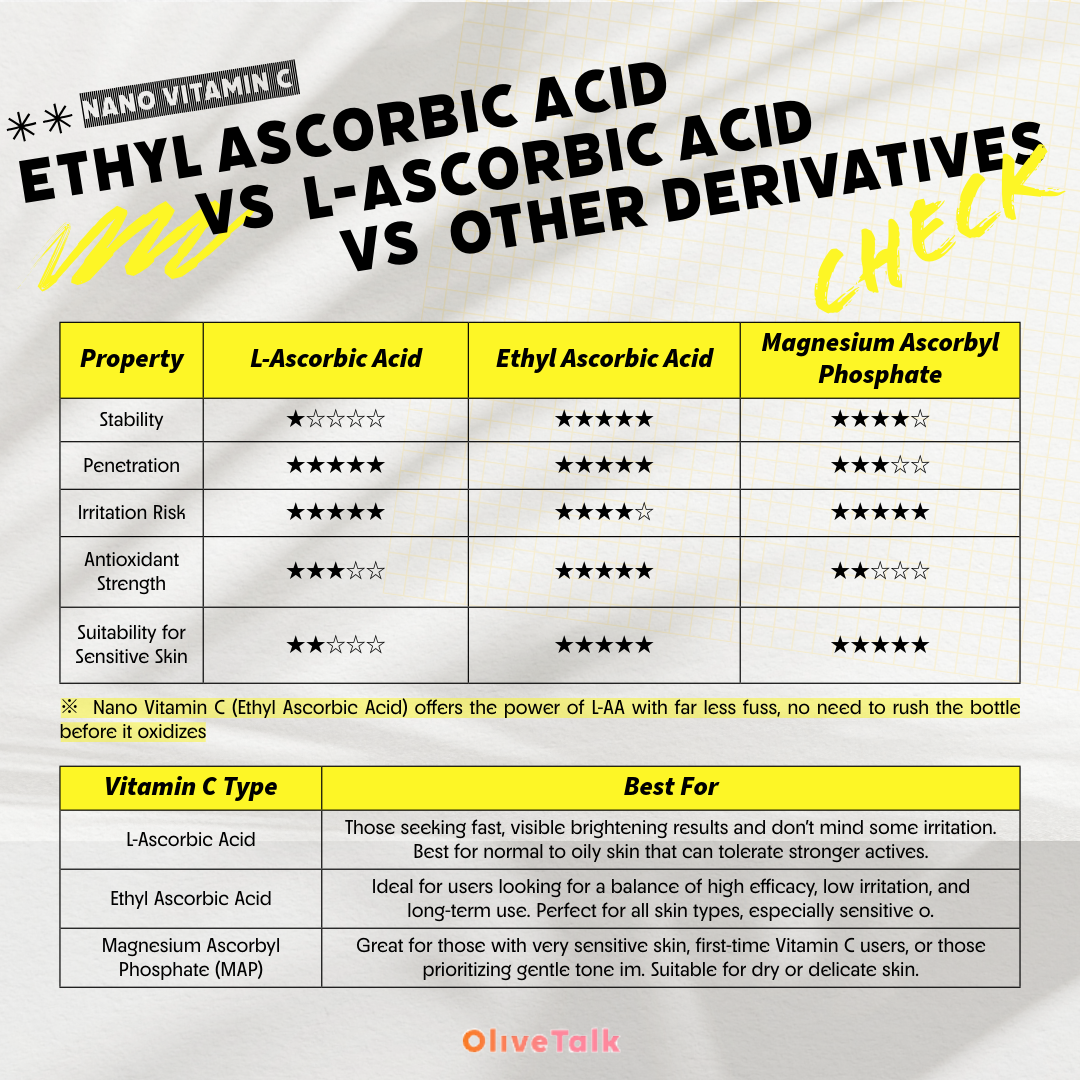
🔍 EAA vs. L-Ascorbic Acid vs. Other Derivatives
(Property / L-Ascorbic Acid / Ethyl Ascorbic Acid / Magnesium Ascorbyl Phosphate)
- Stability / Poor / Excellent / Good
- Penetration / High (but requires low pH) / High (at neutral pH) / Moderate
- Irritation Risk / High / Low / Very low
- Antioxidant Strength / Excellent / Excellent (once converted) / Moderate
- Suitability for Sensitive Skin / Low / High / Very High
※Ethyl Ascorbic Acid offers the power of L-AA with far less fuss — no need to rush the bottle before it oxidizes.
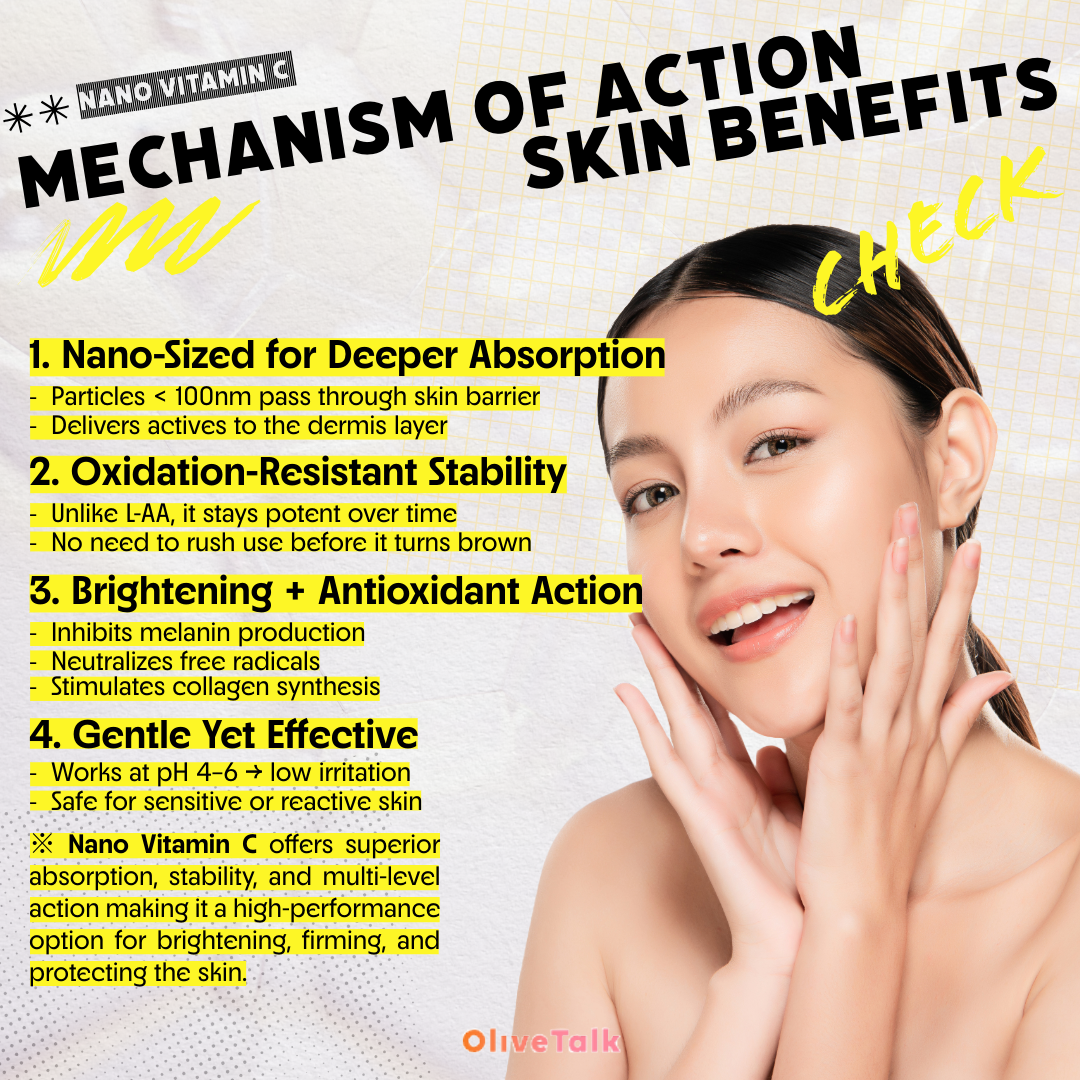
🧬 How Nano Vitamin C Works on the Skin: A Scientific Breakdown
✅ 1. Enhanced Penetration with Nano-Sized Particles
Nano Vitamin C refers to vitamin C derivatives (such as Ethyl Ascorbic Acid) that have been reduced to particles smaller than 100 nanometers.
These ultra-small particles penetrate the stratum corneum more effectively than traditional vitamin C, delivering active ingredients deeper into the skin.
🧪 Result: More effective delivery into the dermis, beyond the superficial epidermis.
✅ 2. Stable and Oxidation-Resistant
Unlike pure L-Ascorbic Acid, which oxidizes quickly when exposed to light, heat, or air, Nano Vitamin C is encapsulated in stable carriers like liposomes or stabilized emulsions.
This protects the vitamin C, ensuring that it remains active by the time it reaches the skin.
🔒 Greater shelf life and consistent efficacy with every application.
✅ 3. Melanin Inhibition for Brightening
Vitamin C suppresses tyrosinase, the enzyme responsible for melanin production.
Nano Vitamin C, with its deep penetration, reaches melanocytes more effectively — resulting in improved brightening and dark spot reduction.
🌟 Fades hyperpigmentation, sun spots, and evens out skin tone.
✅ 4. Potent Antioxidant Protection
Vitamin C is a powerful antioxidant that neutralizes free radicals (ROS), preventing oxidative stress and premature aging.
Nano-sized vitamin C can deliver this protection deeper, aiding in collagen synthesis and wrinkle reduction.
✨ Helps fight fine lines, sagging, and dullness from within.
✅ 5. Gentle on Sensitive Skin
Thanks to its stability and neutral pH range (4–6), Nano Vitamin C is less irritating than L-Ascorbic Acid.
It provides visible results without stinging or redness, making it ideal for sensitive and reactive skin types.
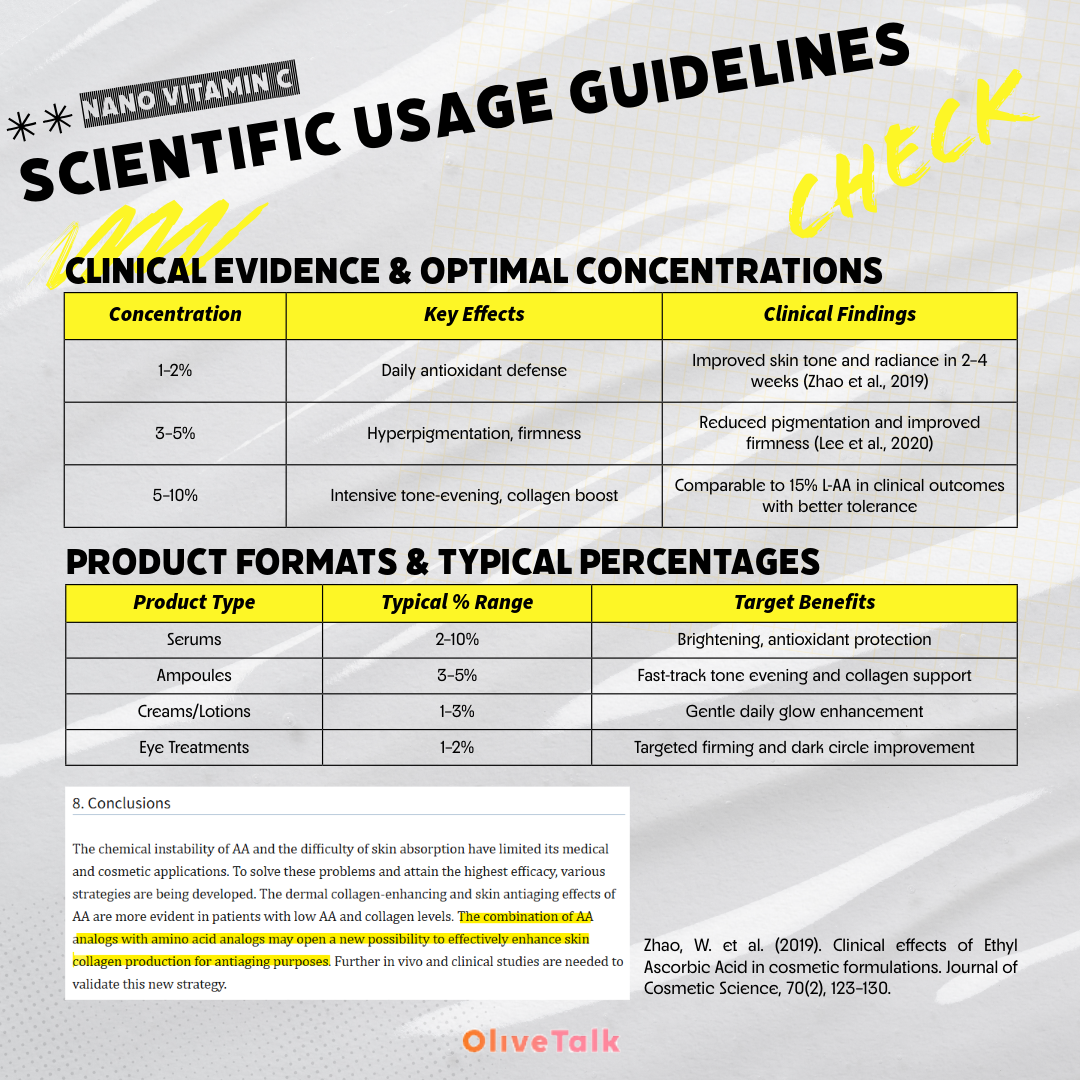
🧪 Clinical Evidence & Optimal Concentrations
(Concentration / Key Effects / Clinical Findings)
- 1–2% / Daily antioxidant defense / Improved skin tone and radiance in 2–4 weeks (Zhao et al., 2019)
- 3–5% / Hyperpigmentation, firmness / Reduced pigmentation and improved firmness (Lee et al., 2020)
- 5–10% / Intensive tone-evening, collagen boost / Comparable to 15% L-AA in clinical outcomes with better tolerance
🧴 Product Formats & Typical Percentages
(Product Type / Typical % Range / Target Benefits)
- Serums / 2–10% / Brightening, antioxidant protection
- Ampoules / 3–5% / Fast-track tone evening and collagen support
- Creams/Lotions / 1–3% / Gentle daily glow enhancement
- Eye Treatments / 1–2% / Targeted firming and dark circle improvement
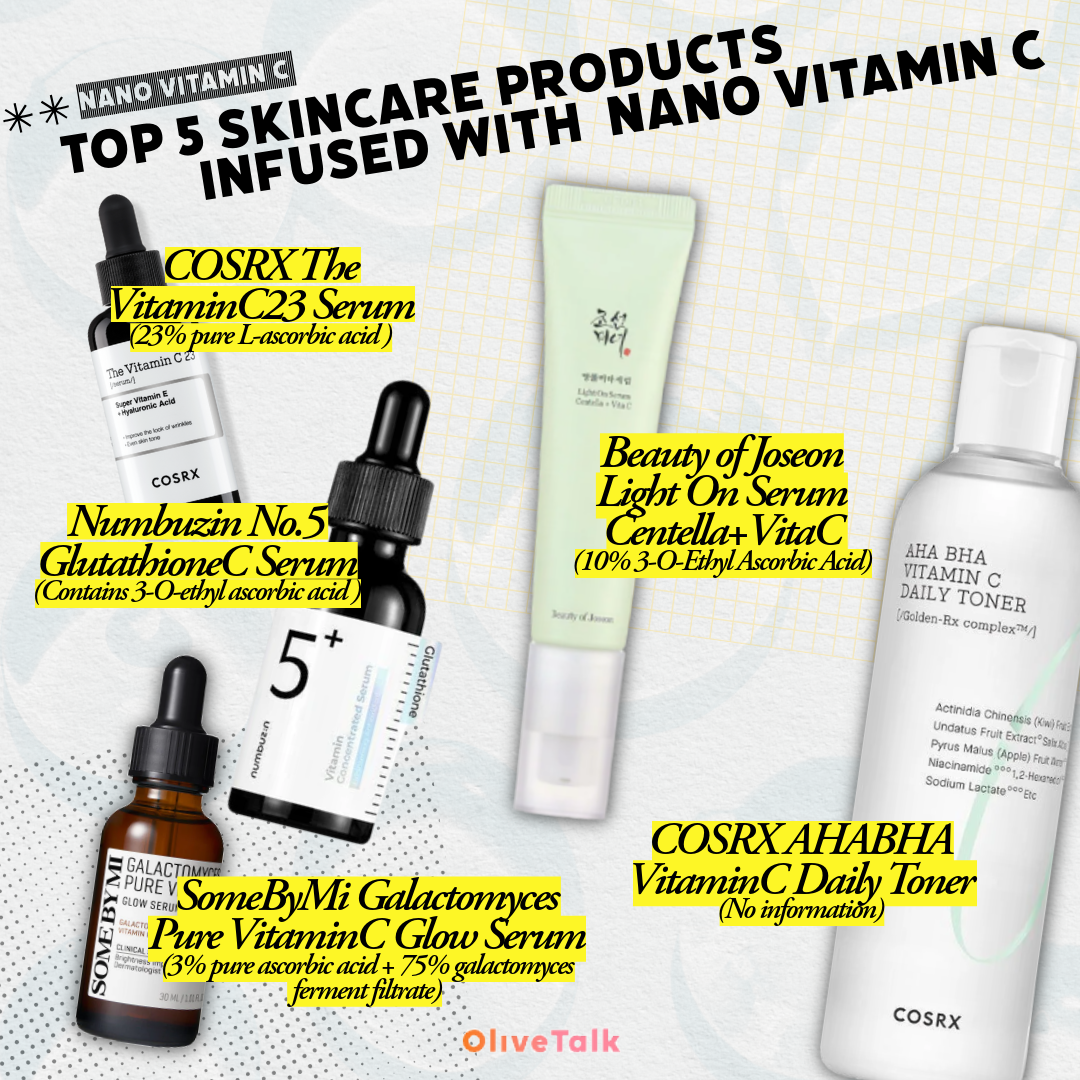
<Top 5 Skincare Products Infused with NANO VITAMIN C>
1. COSRX The Vitamin C 23 Serum
Concentration : 23% pure L‑ascorbic acid
Country: South Korea
2. COSRX AHA BHA Vitamin C Daily Toner
Concentration: Not explicitly stated, but vitamin C is a key ingredient
Country: South Korea
3. Some By Mi Galactomyces Pure Vitamin C Glow Serum
Concentration: 3% pure ascorbic acid + 75% galactomyces ferment filtrate
Country: South Korea
4. Beauty of Joseon Light On Serum Centella + Vita C
Concentration: 10% 3‑O‑Ethyl Ascorbic Acid cosrx.com+15beautyofjoseon.com+15ohlolly.com+15
Country: South Korea
5. Numbuzin No.5 Glutathione C Serum
Concentration: Contains 3‑O‑ethyl ascorbic acid (exact % unspecified)
Country: South Korea
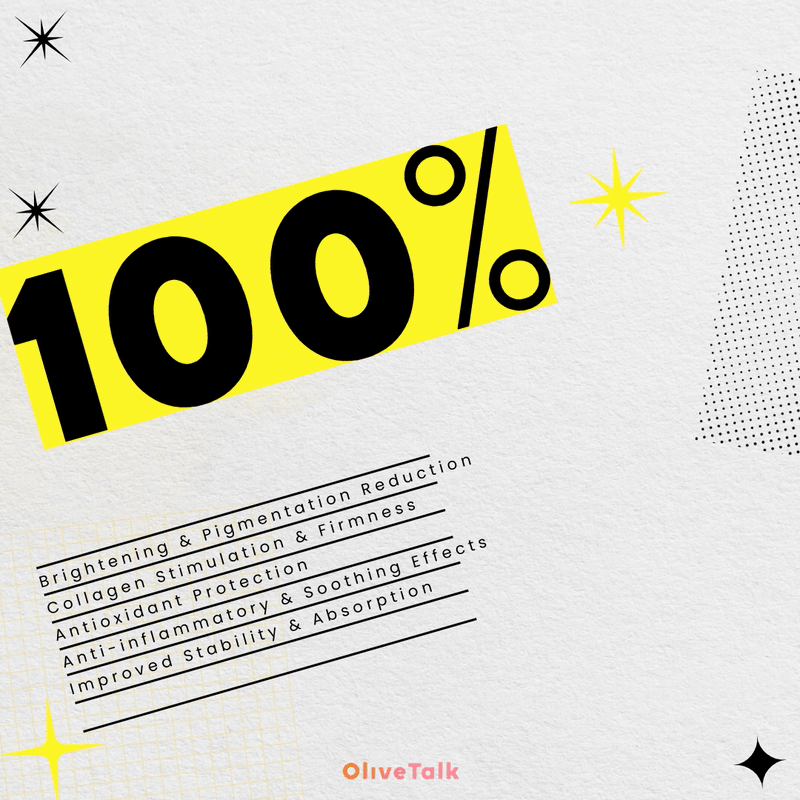
🏛️ Historical Note: From Science Lab to Skincare Star
Vitamin C was once the ingredient you loved but couldn’t commit to — thanks to its short shelf life. But with the rise of Ethyl Ascorbic Acid and nano delivery systems, Vitamin C finally got the stability and power it deserves.
💾 Final Thoughts from a Skincare Expert
If you’ve ever loved Vitamin C but hated the oxidation, the stinging, or the smell, Ethyl Ascorbic Acid is your solution. It’s stable, potent, and perfect for long-term brightening without irritation. Whether you’re chasing glow, clarity, or collagen — this is Vitamin C, upgraded.
📚 References
Zhao, W. et al. (2019). Clinical effects of Ethyl Ascorbic Acid in cosmetic formulations. Journal of Cosmetic Science, 70(2), 123–130.
Lee, M. J. et al. (2020). Topical application of stabilized Vitamin C derivatives. International Journal of Dermatology, 59(7), 839–847.
Pinnell, S. R. (2003). Cutaneous photodamage, oxidative stress, and topical antioxidant protection. Journal of the American Academy of Dermatology, 48(1), 1–19.
Shah, V. et al. (2021). Safety and tolerability of Vitamin C derivatives in clinical use. Clinical, Cosmetic and Investigational Dermatology, 14, 377–384.
 33Comments
33Comments
It’s actually a smart combo imo. What I assume based on reserch is :
- Niacinamide boosts barrier support
- Peptides help with firmness
- Nano C targets brightening without triggering irritation.
The synergy seems amazing!